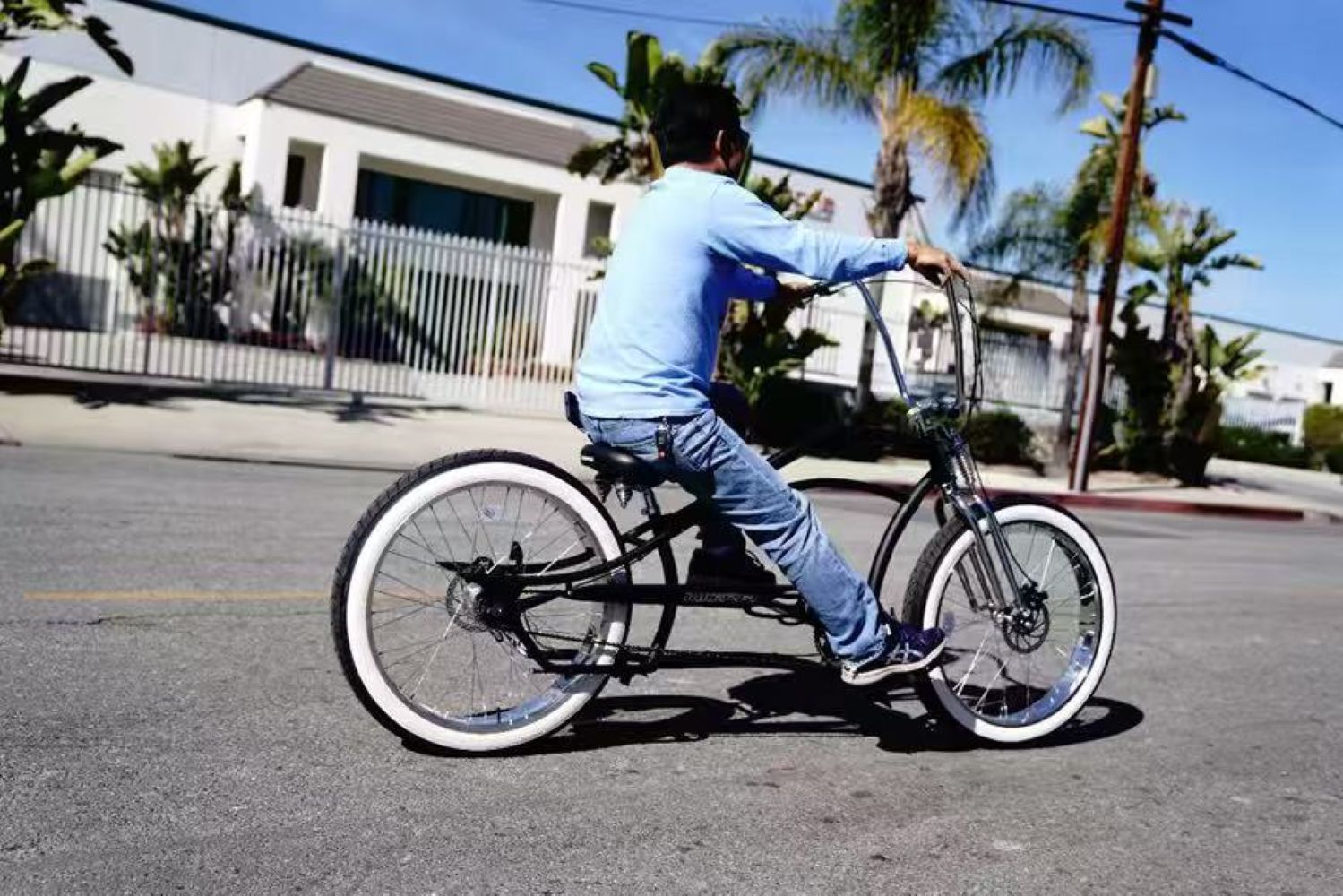Riding a bike should be fun, comfortable, and effortless. Yet, many riders experience knee pain, back stiffness, or numbness simply because their bike seat isn’t set up correctly. Whether you’re a casual cruiser, a daily commuter, or a long-distance cyclist, adjusting your bike seat properly can completely transform your riding experience.
In this detailed guide, we’ll explore how to adjust your bike seat to achieve the perfect riding posture—improving both performance and comfort while reducing strain on your body.
1. Why Proper Bike Seat Adjustment Matters
Your bike seat (saddle) isn’t just where you sit—it’s the foundation of your posture, power, and balance on the bike. A poorly adjusted seat can lead to:
- Knee pain from incorrect saddle height
- Lower back or neck strain from improper reach
- Numbness due to saddle tilt or pressure points
- Reduced pedaling efficiency that wastes energy
- Overall discomfort making rides less enjoyable
The right setup aligns your body in a natural, ergonomic position, helping you ride longer, faster, and without pain.
2. Identify Your Riding Style First
Before you make any bike seat adjustments, consider how and where you ride. Different bikes require different setups.
Cruiser Bike or Comfort Bike Riders
For relaxed beach cruising, aim for a lower bike seat height and upright posture. Keep your knees slightly bent and your handlebars level or slightly higher than your saddle for a true beach cruiser position.
Electric Bike Riders
If you’re riding an electric cruiser like the Twenty5 GT 800W, set your bike seat height lower for balance but high enough for efficient pedaling. Your bike posture should be relaxed — shoulders down, wrists straight, and back comfortable.

Commuters and Fitness Riders
A slightly higher bike saddle position helps with pedal efficiency and speed. Lean forward around 30–45°, reducing drag while maintaining comfort.
Performance and Long-Distance Riders
For more performance-oriented rides, proper power transfer is crucial. A higher saddle and neutral seat tilt help maximize pedal efficiency — though you may sacrifice a bit of comfort.
Different riding styles require different saddle heights and frame sizes. If you want to learn more about finding the perfect frame size and saddle height, check out our guide: Get the Perfect Bike Fit: How to Find the Right Size for You.
3. How to Set the Correct Seat Height
Getting your saddle height right is the foundation of all adjustments. Here’s the easiest and most accurate way to find it.
The Heel Method (Quick and Simple)
1. Sit on your bike and place your heel on the pedal.
2. Rotate the crank so the pedal is at its lowest point (6 o’clock position).
3. Your leg should be straight when your heel is on the pedal.
4. When you pedal normally (with the ball of your foot), your knee should bend slightly — ideal for riding comfort!
If your hips rock while pedaling, your seat is too high. If your knees stay too bent, it’s too low.
The 109% Rule (For Precision)
For experienced riders, you can use the 109% formula — your saddle height (from pedal center to top of seat) should be 109% of your inseam.
Example: if your inseam is 80 cm, your saddle height should be roughly 87 cm.
This method offers precise alignment for efficient power output and long-distance comfort.
4. Adjusting Seat Tilt: Find Your Balance Point
Seat angle — or tilt — affects how your body weight is distributed between your seat, hands, and feet.
Level Seat (Recommended for Most Riders)
A level seat keeps your hips stable and distributes weight evenly. Ideal for cruiser bikes and electric bikes.
Slight Forward Tilt
If you feel pressure on your lower back or soft tissue, tilt the nose of the saddle down by 1–2 degrees. This relieves pressure and improves riding comfort.
Slight Backward Tilt
If you often slide forward or feel wrist strain, a small backward tilt can help. Be careful not to overdo it — too much backward tilt can cause back pain.
Use a small level tool or smartphone app to make sure your seat is aligned properly.
5. Setting the Fore-Aft (Horizontal) Position
The fore-aft position controls how your knees align over the pedals.
The goal is to keep your kneecap directly above the pedal spindle when the crank arms are horizontal (the 3 and 9 o’clock position).
To adjust:
1. Sit on the bike with the pedals level.
2. Drop a plumb line from the front of your kneecap.
3. It should fall directly over the pedal axle.
4. If it’s ahead, move your seat backward; if it’s behind, move your seat forward.
This setup ensures better bike control and balance — crucial for stretch chopper bikes like the Raider Pro DS7.

6. Seat Shape and Padding: Comfort is Personal
Choosing the right seat shape matters as much as adjusting it.
For Cruiser Bikes
Wide, padded saddles with springs — like those on the Arcadia GT or Avera — provide maximum comfort for relaxed upright riding.

For Electric Cruisers
Look for ergonomic designs with shock absorption, since e-bikes often ride faster and farther. Memory foam or gel padding helps absorb vibration.
For Long-Distance Riders
Slimmer saddles reduce friction and pressure on long rides. Pair this with padded shorts for the best comfort.
Remember: comfort is subjective — no one saddle fits all.
7. Handlebar and Seat Relationship
The handlebar height and bike saddle position work together to define your riding posture.
For cruiser bikes and stretch choppers, your handlebars should be level or slightly higher than your seat for an upright, relaxed position.
For commuter or e-bikes, keep a slight forward lean to improve aerodynamics.
8. The Perfect Riding Posture Checklist
After adjusting everything, test your setup with a short ride.
Here’s what perfect posture feels like:
l Hips stable — no side-to-side rocking
l Knees slightly bent at bottom of stroke
l Shoulders relaxed, not hunched
l Elbows slightly bent, not locked
l Hands resting comfortably on grips
l Back straight or gently curved
You should feel balanced and in control — not stretched, squished, or tense.
9. Common Mistakes to Avoid
l Seat too high: Causes hip rocking, back strain, and poor control.
l Seat too low: Wastes energy, increases knee pressure.
l Too much tilt: Causes sliding or pressure discomfort.
l Ignoring handlebar height: Creates wrist or neck pain.
l Wrong saddle choice: Even perfect adjustment won’t fix a bad seat fit.
Avoid these, and you’ll save yourself a lot of soreness and frustration.
10. Bonus: Fine-Tuning for Electric and Stretch Bikes
Electric and stretch chopper bikes (like the Twenty5 GT, Kraken Pro, or Scorpion Pro) have unique geometries that require slightly different seat setups.
- Keep your seat lower for balance, especially with heavy batteries.
- Maintain a slight recline for that Harley-style relaxed feel.
- Use extra-wide saddles for comfort during long, powered rides.
Stretch frames change the pedal angle, so experiment with micro-adjustments — even 5mm can change your comfort dramatically.
11. Use Proper Tools for Adjustment
Once you’ve found your perfect setup, secure it properly.
Use a torque wrench for precision or a quick-release seat clamp if you share your bike with family or make frequent adjustments.
Add a thin layer of grease on the seat post to prevent corrosion or slipping — a must for steel cruiser frames.
12. Regular Check and Seasonal Re-Adjustments
As you ride more, your posture changes — and so should your bike setup.
Every few months, check:
- Seat height
- Clamp tightness
- Post alignment
- Spring or rail wear
Also, adjust your seat angle slightly for winter vs summer riding. Extra clothing layers can affect your comfort and leg reach.
Conclusion
The way you adjust your bicycle saddle determines your experience on every ride. Whether you're leisurely cycling along the beach with Chico bike, carefully tuning your saddle ensures better posture, comfort, and confidence.
Take 10 minutes today to measure, adjust, and test your setup — and rediscover the true meaning of comfortable bike riding.
FAQ
Q1: How often should I adjust my bike seat?
You should check it every few months, especially if you change shoes, pedals, or notice new discomfort.
Q2: What if I share my bike with someone else?
Mark your preferred height with tape or a marker on the seat post so you can reset it easily.
Q3: How do I know if my saddle is the wrong size or shape?
If you feel numbness, soreness, or constant shifting, you may need a different saddle width or padding.
Q4: Does clothing affect seat comfort?
Yes! Padded bike shorts and proper cycling gear can significantly improve comfort and reduce chafing.
Q5: How do I know if my bike posture is correct?
Your back should be straight but not rigid, elbows slightly bent, and your knees should track in line with your feet when pedaling.



Share:
Unlock Unlimited Cycling Power: 5 Simple Tips for Faster Stronger Rides